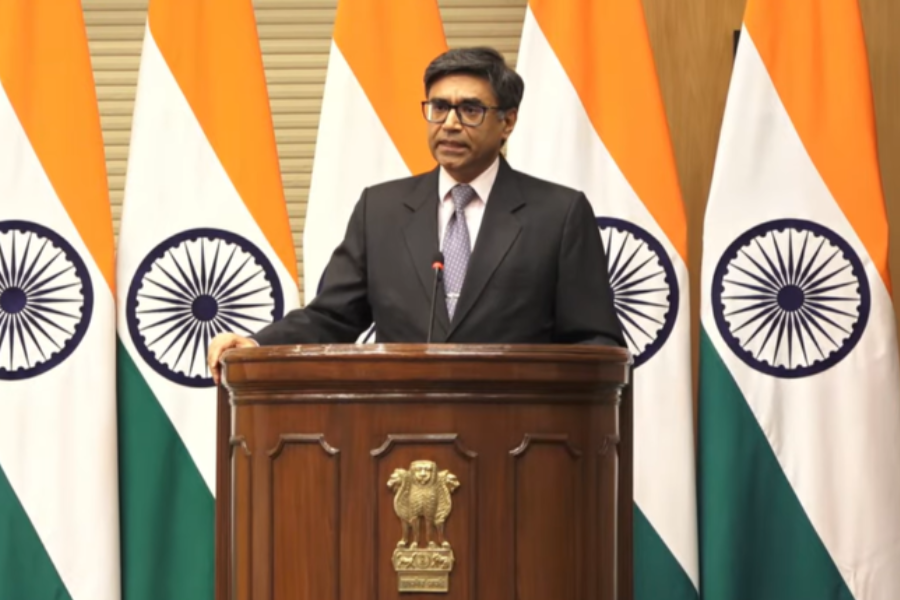India Rejects Claims of Targeting Pakistan’s Nuclear Sites as Ceasefire Holds

India has firmly denied allegations that it targeted Pakistan’s nuclear installations during its recent military operations, as calm returned to the border following a high-stakes ceasefire agreement between the two countries.
The Indian Army confirmed that the night remained quiet across Jammu and Kashmir and other border areas — the first without reports of cross-border fire since hostilities escalated last week. Military leaders from both nations are expected to continue discussions on Monday to define the next steps under the truce.
Air Marshal Awadhesh Kumar Bharti revealed that India had carried out deep strikes over 150km into Pakistani territory, targeting locations in Karachi, Lahore, and Gujranwala. He emphasized that India deliberately avoided Pakistan’s alleged nuclear facility at Kirana Hills, adding, “We had no knowledge of a nuclear installation there. It was never a target.”
Clarifying the purpose of the operation, Air Marshal Bharti reiterated that India’s mission was to strike terrorist camps and infrastructure. “Our intent was never to target the Pakistani military, but their interference forced us to respond,” he said.
The ceasefire was brokered by US President Donald Trump, who took credit for defusing one of the most serious military escalations between the nuclear-armed neighbors in nearly 30 years. More than 70 lives were lost during the four-day conflict.
India’s military released new footage showing what it claimed was the downing of a Pakistani Mirage fighter jet and damage to multiple military bases under its operation dubbed “Sindoor.” Indian forces assert they eliminated over 100 militants, including high-profile targets linked to the Pahalgam attack, which killed 26 civilians in Indian-administered Kashmir on 22 April.
India and Pakistan also accused each other of shooting down fighter jets during an aerial clash involving more than 100 aircraft — reportedly the largest such engagement since World War II. India claimed to have targeted nine militant training sites, while Pakistan responded by striking 26 Indian military positions.
India reported 35–40 Pakistani military casualties along the Line of Control. Air Marshal Bharti acknowledged losses but declined to confirm the number of Indian aircraft downed. Pakistan, meanwhile, said it downed five Indian jets, including French-made Rafales, a claim New Delhi has not addressed directly.
While India maintained that the ceasefire was initiated by Pakistan, Islamabad asserted that it was India that requested the truce. Pakistan’s Lt Gen Ahmad Sharif stated that the military’s response was measured and focused solely on military assets, avoiding civilian areas. He warned of a strong counterattack in case of future provocations.
Information Minister Attaullah Tarar claimed that Pakistani forces killed 40–50 Indian soldiers during the conflict. These numbers have not been verified independently.
On the ground, civilians in border regions like Poonch shared harrowing accounts of fleeing their homes under heavy shelling. Many returned only after the ceasefire was announced.
Under the terms of the agreement, both sides have pledged to halt all military action — on land, in the air, and at sea. While Pakistan publicly expressed gratitude to the US and President Trump for their mediation efforts, India has remained silent on the American role. Prime Minister Narendra Modi convened a high-level meeting with security officials on Sunday to review the situation.
US Secretary of State Marco Rubio said he had spoken with UK Foreign Secretary David Lammy, urging both nations to honor the ceasefire and keep communication lines open. The US emphasized the importance of direct dialogue between India and Pakistan in maintaining long-term peace.






